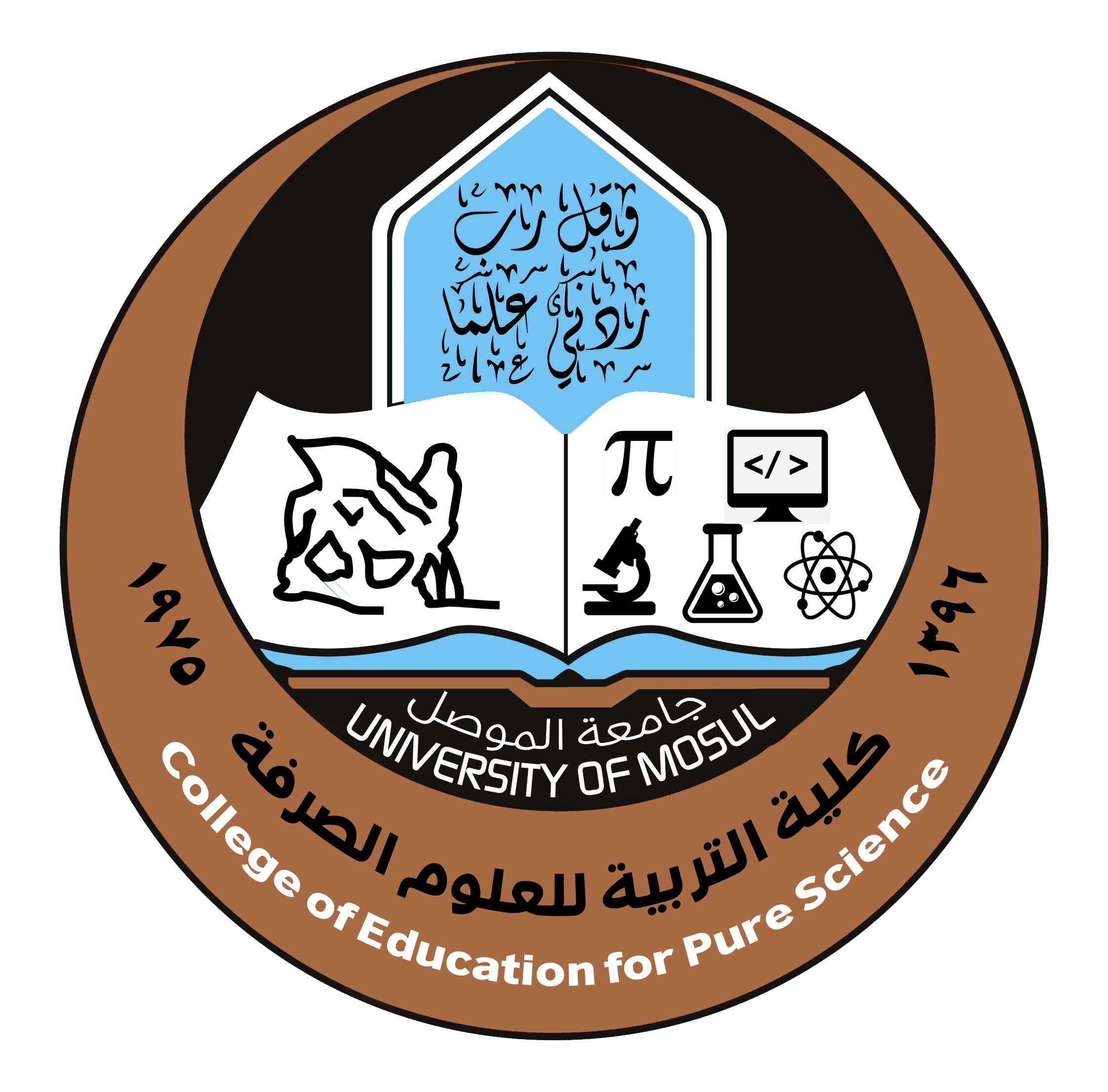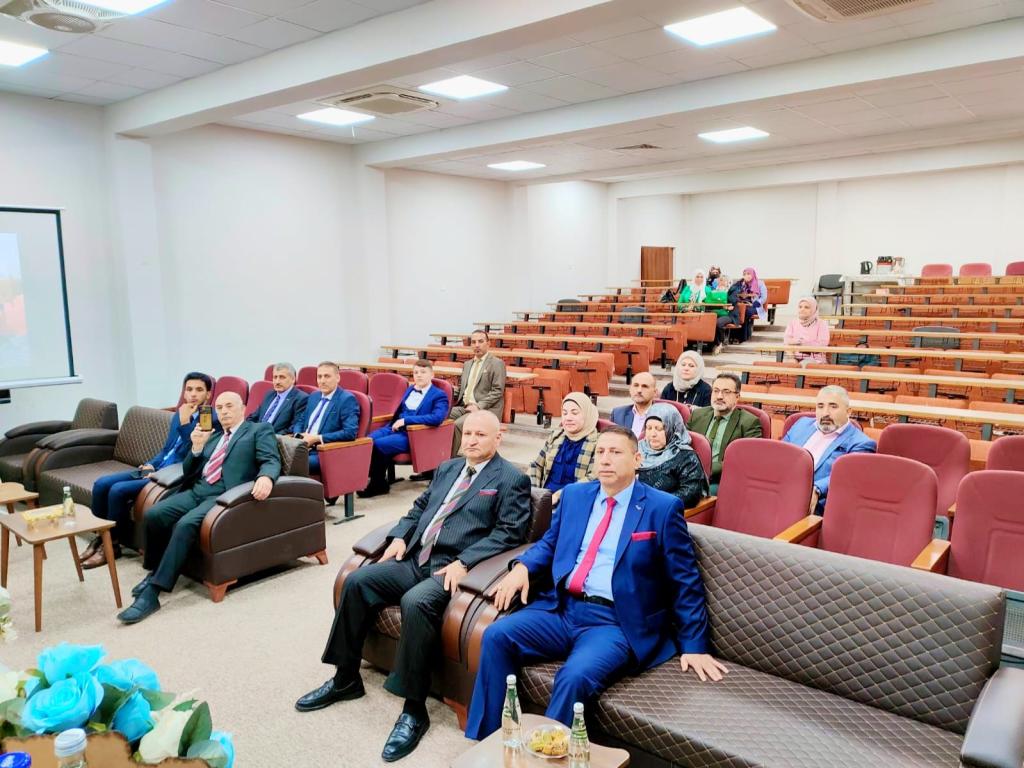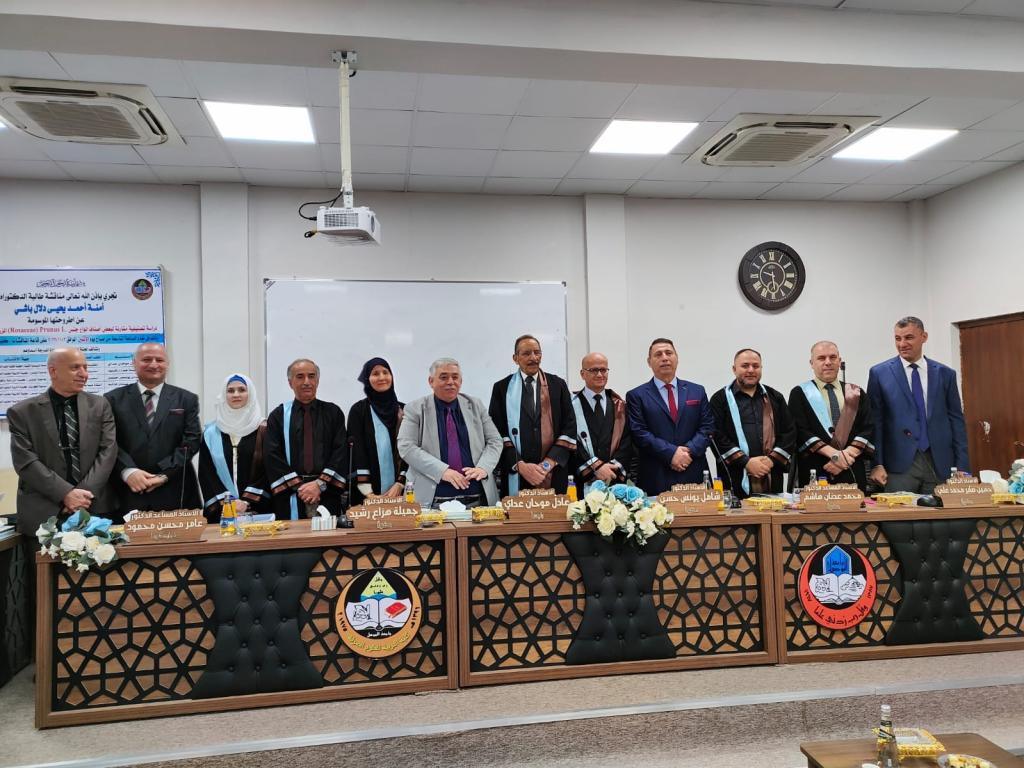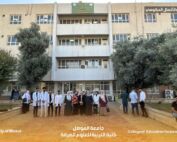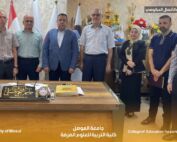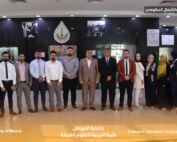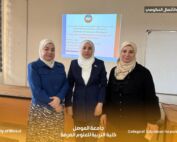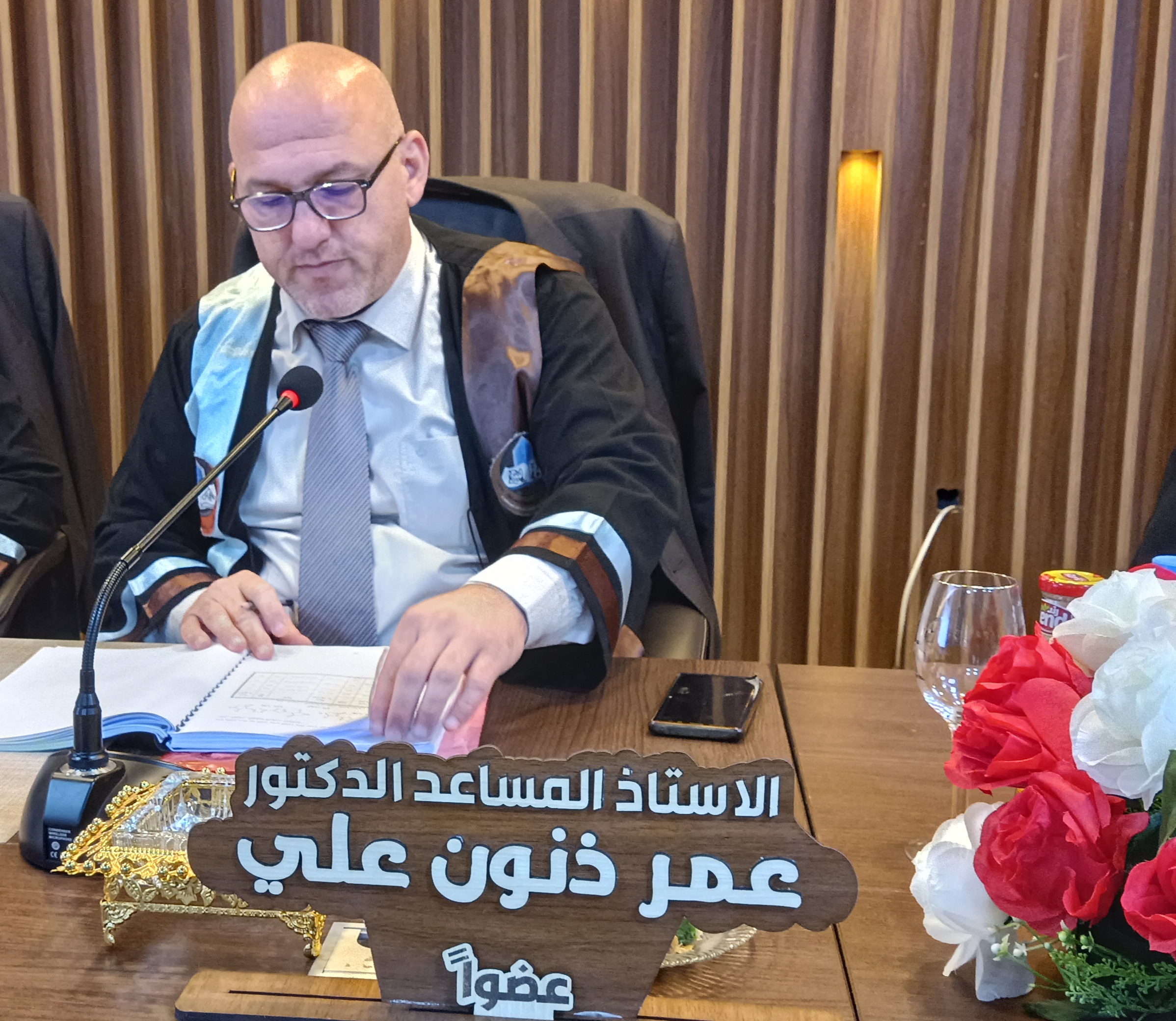7 November، 2022
PH.D. Dissertation Viva-Bioilogy Department
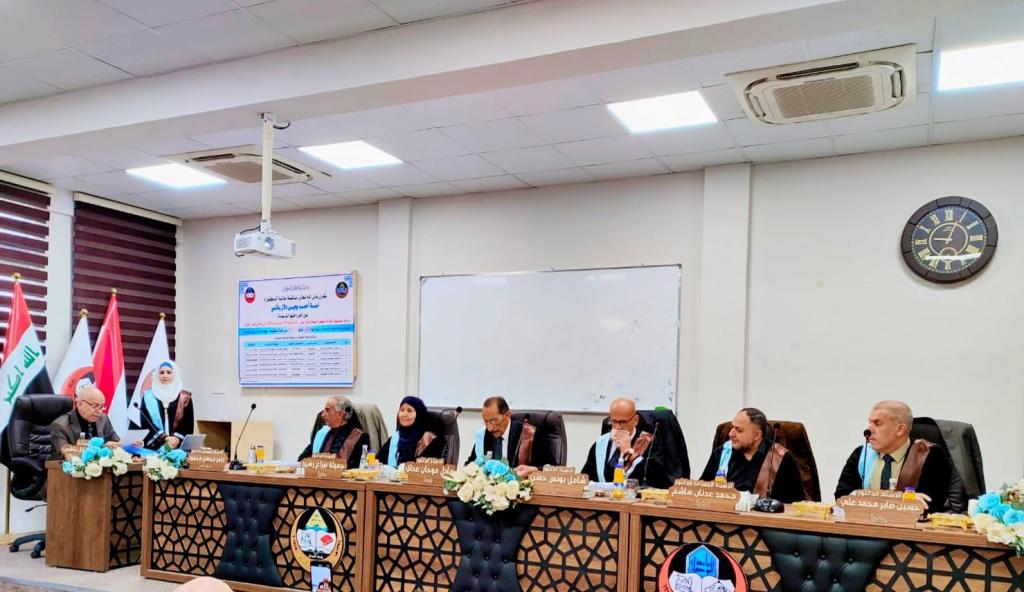
PH.D. Dissertation Viva in the College of Education for Pure Science entitled ” A taxonomic study of some species of the genus (Rosaceae) Prunus L. Cultivated in Northern Iraq “The College of Education for Pure Science, University of Mosul, has done the PH.D. Dissertation Viva entitled ” A taxonomic study of some species of the genus (Rosaceae) Prunus L. Cultivated in Northern Iraq “,On Monday, November 7, 2022, the respected Dean of the College, Assistant Professor Dr. Qais Ismail Ibrahim, the Honorable Scientific Associate and Administrative Associate, the Honorable Head of the Department of Biology, and a number of the college’s teachers were attended the viva. The current study, presented by the PH.D. Student Amina Ahmed Yahya Dalal Bashi in the Department of Biology, dealt with the taxonomic traits which are Morphology, Anatomical and Genetic Numerical for (6) cultivars of apricots Prunus armeniaca L. she Sayeb, Canion, Castelbrite, Priana, Sndyany, Zaginia. In addition to (6) cultivars of Plum Prunus xdomestica L. Songold, Freedom, Showtime, pissardi, Italica, Sant Rosa (part of the Rosaceae family). All these cultivars grown in a cultured manner in different regions of northern Iraq, including Dohuk (Zakho and Zawitya), Erbil (Hiran district) and Mosul. The Morphological study included the characters (the nature of the plant, stems, twigs, buds, stipules, leaves and their peduncles, flowers, including the Perianth and reproductive organs, fruits and seeds, as well as their indumentum. The floral and fruiting characteristics were more stable than others, whereas, the stems, buds, leaves and Stipules showed a great difference in their dimensions, shapes, and their forms in different cultivars, which had a good taxonomic importance in isolating and diagnosing the cultivars of the two studied species. The pollen grains study also showed it is of the tricolporate type, and according to its shape in the studied cultivars, it appeared in the equatorial view, spherical, subspherical, or ovate. In the polar view, their shapes were spherical-triangular, triangular, or Triangula-Tetrangular. Whereas for the surface ornamentation of pollen grains when examined with a Scanning Electron Microscope (SEM), it was reticulate in the cultivar Sndyany for the type P. armeniaca or granular in Castelbrite, Priana for P. armeniaca or striped in Canion for P. armeniaca and the cultivars Songold, Freedom, pissardi, Italica of the plum species P. xdomestica or granular and striped as in cultivars Sayeb, Zaginia for P. armeniaca and Showtime, Sant Rosa for P. xdomestica . On the anatomical side, the characteristics of the epidermis were studied in terms of the nature of the cell walls on the upper and lower surfaces, and the stomatal complex, which was of the anomocytic type, and its leaves, which were of the Hypostomatic type, as the presence of stomata was limited to of the Abaxial surface blade and their absence on the Adaxial surface in all the cultivars of the two types studied, The leaf veining system is a Pinnate reticulum of the type Brochidodromous in apricot cultivars and Craspedromous in plum cultivars. Moreover, the cross-sections of the leaf stalk, its blade, its middle vein, and the number of layers of epithelial and spongy tissue As well as the crystals and their Indumentum and the wood elements of the branches, as the study of these parts had a taxonomic importance in isolating the cultivars and supporting the studied Morphology characters. For genetic markers, they included estimation of genetic similarity and dimension between the studied cultivars using Rapid Amplification Polymorphic DNA (RAPD) technology , in which DNA fragments were multiplied and amplified during Polymerase Chain Reaction (PCR) using 13 random primers which yielded (1038) random bundle, some of which were distinct (unique and absent) and the other part was different, as the OPF-20 initiator produced the highest number of bundles, which amounted to (118) bundles, and the highest efficiency amounted to (11.37), and the lowest number of bundles was shown by the initiator OPA-19, which amounted to (51) bundles and the least efficiency His (4.91), and the statistical analysis using the NTSYS-PC program showed that the value of the genetic dimension between these varieties ranged between (0.065-0.887), Since the highest value was found between the two cultivars Showtime and pissardi for P. xdomestica it reached (0.887), and the lowest value was found between the two cultivars Priana and Sndyany for P. armeniaca, which amounted to (0.065). The genetic similarity between the studied cultivars ranged between (0.937 – 0.412), the highest value found between the two cultivars Priana and Sndyany for P. armeniaca its value was (0.937), and the lowest value found between the two cultivars Showtime and pissardi for P. xdomestica reached (0.412). Through the dendrogram cluster, it was possible to divide the studied cultivars into two main groups, the first included all the Apricot cultivars P. armeniaca, which was divided into two secondary groups based on the degree of genetic similarity. The first included Canion, Castelbrite, Priana, Sndyany, Zaginia Which in turn was divided into two secondary groups, and the second included the cultivar Sayeb, and the second main group included all the pear cultivars P. xdomestica, which was divided into two secondary groups also according to the degree of similarity between the cultivars. The first included the cultivars Songold, pissardi, Italica, and the second included the cultivars, pissardi, Italica , Saint Rosa. On the numerical side, some Morphological and anatomical characteristics were analyzed numerically to clarify the relationship between the two types apricot P. armeniaca L and plum P. xdomestica by Dendrogram and Polygonal graphs.The Viva committee was chaired by Prof. Dr. Adel Mohan Aday / Sulaymaniyah Technical University/Technical College of Applied Sciences and the membership of Prof. Dr. Jamela Hazaa Rashid / University of Mosul /College of Education for Pure Science, Prof. Dr. Shamil Younes Hassan / Mosul University / College of Agriculture and Forestry, Asst. Prof. Dr. Mohamed Adnan Hashem / Tikrit University / College of Education for Pure Sciences, Prof. Dr. Hussein Saber Muhammad Ali / University of Mosul /College of Education for Pure Science and under the supervision and membership of Asst Prof. Dr. Amer Mohsen Mahmoud / University of Mosul /College of Education for Pure Science.
